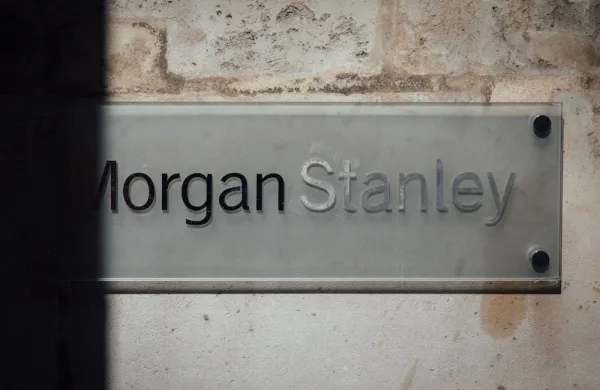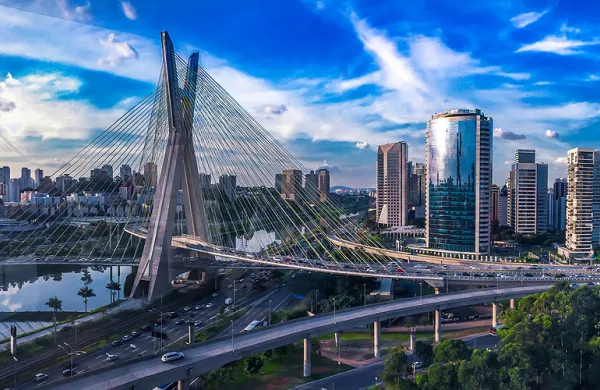The ASEAN Economic Community, slated for launch at the end of 2015, is set to become a major player on the global trade and investment stage. But first it must address some serious challenges.
By Ben Davies
Chris Ryan has had a tough time selling ASEAN at global investment forums. Until recently, the Hong Kong-based managing director of Asia Pacific for MSCI has been shocked by the lack of investor awareness about a market comprised of 10 countries in one of the fastest-growing regions of the world.
Nowadays the ASEAN story is better-known, but Ryan is the first to admit that there is a long way to go before it gets the recognition that it deserves as a major global trading bloc in-the-making.
With less than 18 months to go before the official launch of the ASEAN Economic Community (AEC), the information flow is cranking up. On paper at least, the potential of the AEC is enormous. The new regional bloc will represent a market with a combined population of more than 600 million and total GDP of nearly US$2.5 trillion. Better still, according to research conducted by McKinsey & Company, it will have one of the youngest and fastest-growing middle class populations in the world.
Last year, foreign direct investment in the five largest ASEAN economies (Indonesia, Malaysia, the Philippines, Singapore and Thailand), reached a record US$128 billion. The figure is considerably higher than the US$117 billion received by China. “The biggest risk in ASEAN and the Greater Mekong Sub-region is not being there,” says Jirapun Pongpanite, chief financial officer at General Electric Thailand.
Adopted at the 13th ASEAN Summit held in Singapore almost seven years ago, the vision for the AEC is far-reaching: to achieve closer economic integration through the removal of obstacles to investment, including free movement of goods, services, investment, skilled labor and freer flow of capital. The full member states are Brunei Darussalam, Cambodia, Indonesia, Laos, Malaysia, Myanmar, Philippines, Singapore, Thailand and Vietnam.
According to ASEAN Secretary General Le Luong Minh, around 80 percent of the goals set in the ASEAN Economic Community master plan already have been implemented. These include a revamp of ASEAN’s legal framework for economic integration as well as comprehensive agreements on trade and investment. Nonetheless, he admits that there is still plenty of work to do to eliminate all tariffs and to ensure full liberalization of the financial services sector and the capital account.
Taking the First Step
Kamalkant Agarwal, an advisor to the Executive Committee at Siam Commercial Bank, believes that the official launch of the AEC is simply a first step in a long process. “It is important to have a milestone so people can work towards it,” he says. “This is a long journey, but there is no turning back.”
The good news is that while ASEAN may have moved slowly, it has already achieved more than many of its critics ever dreamed possible. Between 2001 and 2013, ASEAN’s combined regional GDP rose from US$560 billion to US$2.4 trillion. That puts it second only to China in terms of regional economic growth. The Asian Development Bank estimates that the share of ASEAN’s middle class will rise to 65 percent by 2030 from 24 per cent in 2010.
Rapid economic expansion has already helped lower the extreme poverty level in the region from 13 percent in 2000 to just 4 percent today. It’s a trend that is likely to continue in even the most remote parts of ASEAN.
Prasarn Trairatvorakul, governor of the Bank of Thailand, sees a bright future for ASEAN as the region pursues closer integration in the global economy, and especially with China and India. Additional impetus could come from rapid economic growth among relatively less-developed ASEAN countries such as Myanmar, Cambodia, Laos and Vietnam, collectively known as the Greater Mekong Subregion (GMS).
“The ASEAN Economic Community will be an important gateway connecting the GMS to major markets of the Asia-Pacific region,” he says.
ASEAN also faces huge challenges, ranging from widespread corruption and poor governance to weak financial sectors, inadequate infrastructure and yawning disparities of wealth. In a paper entitled ‘ASEAN – The Way Forward’, Kishore Mahbubani, the dean of Lee Kuan Yew School of Public Policy in Singapore, argues that the region’s recent achievements mask significant structural weaknesses. “ASEAN countries have a mixed record when it comes to meeting their own deadlines,” he writes. “One danger is that they will settle for implementing only 70 per cent of their stated reform targets, declare political victory and give up on the remaining 30 per cent.”
Another danger is heightened political tensions in the region. The recent military coup in Thailand, the second in ten years, has once again put the spotlight on democracy and human rights in ASEAN. Meanwhile, increased rivalry with China has raised the possibility of serious confrontation in the South China Sea over territorial control and potential offshore oil rights.The risk is that potential investors may be reluctant to commit to ASEAN in the face of the prevailing uncertainties.
Yet in some ways, ASEAN has already proven its resilience. Economic reforms undertaken in the wake of the 1997 financial crisis ensured that the region has been largely immune from the turmoil suffered by many other emerging markets following US moves to end quantitive easing. While countries such as Turkey and Argentina were hit by large capital outflows and weakening currencies, the Philippines, Indonesia and Malaysia have enjoyed considerably greater financial stability.
Part of the reason is that government debt levels in the region, while rising fast, are well below those of many other emerging and developed countries. According to the IMF, the government debt to GDP ratio for the five largest ASEAN economies was 37 percent in 2013. That compares with 93 percent in the United Kingdom and 108 percent in the US.
A Moody’s report issued in July shows that household debt has risen significantly in ASEAN over the past few years, reaching an all time high level in Malaysia and Thailand. But the region continues to post solid growth rates. The OECD forecasts that ASEAN will grow at an average of 5.4 percent over the next five years. Among the fastest-growing countries are Cambodia, Laos and Myanmar, along with the Philippines and Indonesia. By comparison, Thailand’s GDP is forecast to grow between 1.5 percent and 2.5 percent in 2014 thanks to months of political unrest and the delay of its multi-year infrastructure program.
When Global Investors Come
Some economists believe that the entire ASEAN region will benefit from an influx of global investors. The potential is considerable. The seven ASEAN Exchanges have a combined market capitalization of approximately US$2 trillion, with more than 3,600 listed companies. Some of these companies rank among the largest and most dynamic corporations in the world, including leaders in finance and banking, energy, telecommunications, commodities, automotive manufacturing and other industrial sectors.
Hugh Young, managing director of Aberdeen Asset Management, continues to see value in ASEAN. Although he believes that stocks are no longer cheap, he expects regional growth to be supported by a number of factors. “The region is home to a population of 600 million, and growth prospects are underpinned by favourable demographics, a growing middle class and increased urbanization,” he says. “As labor costs in China become more expensive, ASEAN is also looking increasingly attractive as a low-cost manufacturing hub.” n
A Rising Star
Focus on the Philippines
The stand-out performer among ASEAN economies is the Philippines. Once viewed as a regional laggard, the economy last year grew by 7.2 percent on the back of rising exports, an increase in consumer spending and higher manufacturing output. This year, the economy is likely to slow to around a still-solid 6.4 percent. In large part this reflects the impact of Typhoon Haiyan, the deadliest Philippine typhoon on record. The massive storm struck vast areas of the country last November, killing more than 6,000 people. Other factors adversely affecting the economy this year include slower government spending and a tightening of monetary policy.
Despite the challenging environment, most economists remain upbeat—with GDP forecasts predicting a 6.7 percent expansion in 2015. “This projected growth remains one of the fastest in the East Asia region, second only to China among the major economies,” says World Bank country director Motoo Konishi. Inflation is under control at less than 5 percent. Meanwhile the country has managed to lower its debt-to-GDP ratio to 49.2 percent in 2013 from 71 percent in 2004. As a result, the government has been able to double social services spending over the past four years.
Political Stability Drives Growth
One of the major factors in the Philippines’ turnaround has been renewed political stability. Since the election of Benigno Aquino as president in 2010, the country has undergone widespread reforms ranging from a clampdown on corruption to the closing of tax loopholes and a reduction in the yawning fiscal deficit.
Perhaps more importantly, Aquino has removed many of the bureaucratic and legal obstacles that made the Philippines a less attractive place for foreigner investors in the past. Another welcome development is that accelerated domestic reforms have led to a reduction in the high level of poverty, which has long plagued the country. The proportion of people living below the poverty line fell to 24.9 percent in 2013, down from 27.9 percent the previous year.
The government also is boosting its spending on new roads, bridges, ports and airports. The projects are viewed as critical if the country wants to close the gap with its ASEAN neighbors after decades of inadequate public investment. Diana Del-Rosario, economist at Deutsche Bank, points out that in the first quarter of 2014, public construction in real terms accelerated by 22 percent year-on-year. Growth was fuelled by road projects in Metro Manila as well as the Skyway Stage 3 project that commenced construction early this year.
Aside from government-financed capital spending, Del-Rosario believes that the country will benefit from the private sector’s contribution as the Public-Private Partnership (PPP) program gains momentum. To date, seven projects under the PPP scheme have been awarded to successful bidders including the Mactan-Cebu International Airport Passenger Terminal Building and the Automated Fare Collection System project in Metro Manila. Seven other big-ticket PPP projects are likely to be awarded within the year.
“We do not see this recent pick-up in investment expansion as short-lived,” says Del-Rosario. “There are indicators that support upbeat private sector investment activity in the coming quarters and government-priority policies that bode for a sustained lift in domestic investments at least in the next two years.”
Credit Rating Upgrades
Credit rating agencies have responded to the improvements with a string of upgrades that promise to increase foreign confidence in the Philippines. In May, Standard & Poor’s raised the Philippines’ sovereign credit rating from BBB- to BBB, two notches above investment grade. S&P praises widespread reforms “to address shortcomings in structural, administrative, institutional, and governance areas.” Furthermore, the rating agency believes that improvements in government revenue generation, spending efficiency and levels of public debt are likely to continue even after the current administration has left office. His term ends in June 2016, but there is some speculation that Aquino might seek a change in the country’s constitution that would allow him to run for re-election.
Some Problems Persist
While the Philippines has made considerable progress in strengthening its economy and boosting its appeal to foreign investors, the country is still desperately in need of new jobs as well as improved health and education to raise labor productivity and the competitiveness of Filipino workers.
The World Bank estimates that the country will need to spend an additional 5 percent of GDP on health and education to increase labor productivity and competitiveness of Filipino workers. “Going forward, the Philippines can sustain high growth by accelerating structural reforms and increasing investments in infrastructure and in the health and education of the Filipino people,” said Karl Kendrick Chua, World Bank senior country economist for the Philippines.
Another major challenge facing the government is to boost tax collections while making sure that the country’s tax system is more equitable. Over the past three years, the government has successfully raised tax revenue by the equivalent to 1.2 percent of GDP. The increase is largely due to higher tobacco and alcohol taxes, together with improved tax administration. Most economists agree, however, that further tax and administrative reforms are needed if the country is to broaden the tax base and improve a system that is still riddled with inefficiencies and corruption.
For their part, investors who bought into the Philippine stock market when Aquino took office have had a giddy run. Since June 2010, the market has almost doubled.Yet some analysts worry that Philippine equities are no longer cheap. The MSCI Philippines is currently trading on a forward PER of 18.4x against a long-term average of 14.5x. While a correction may not be imminent, any further upside is likely to depend on the government’s ability to maintain its reform momentum during the upcoming electoral season—which is already getting underway.





